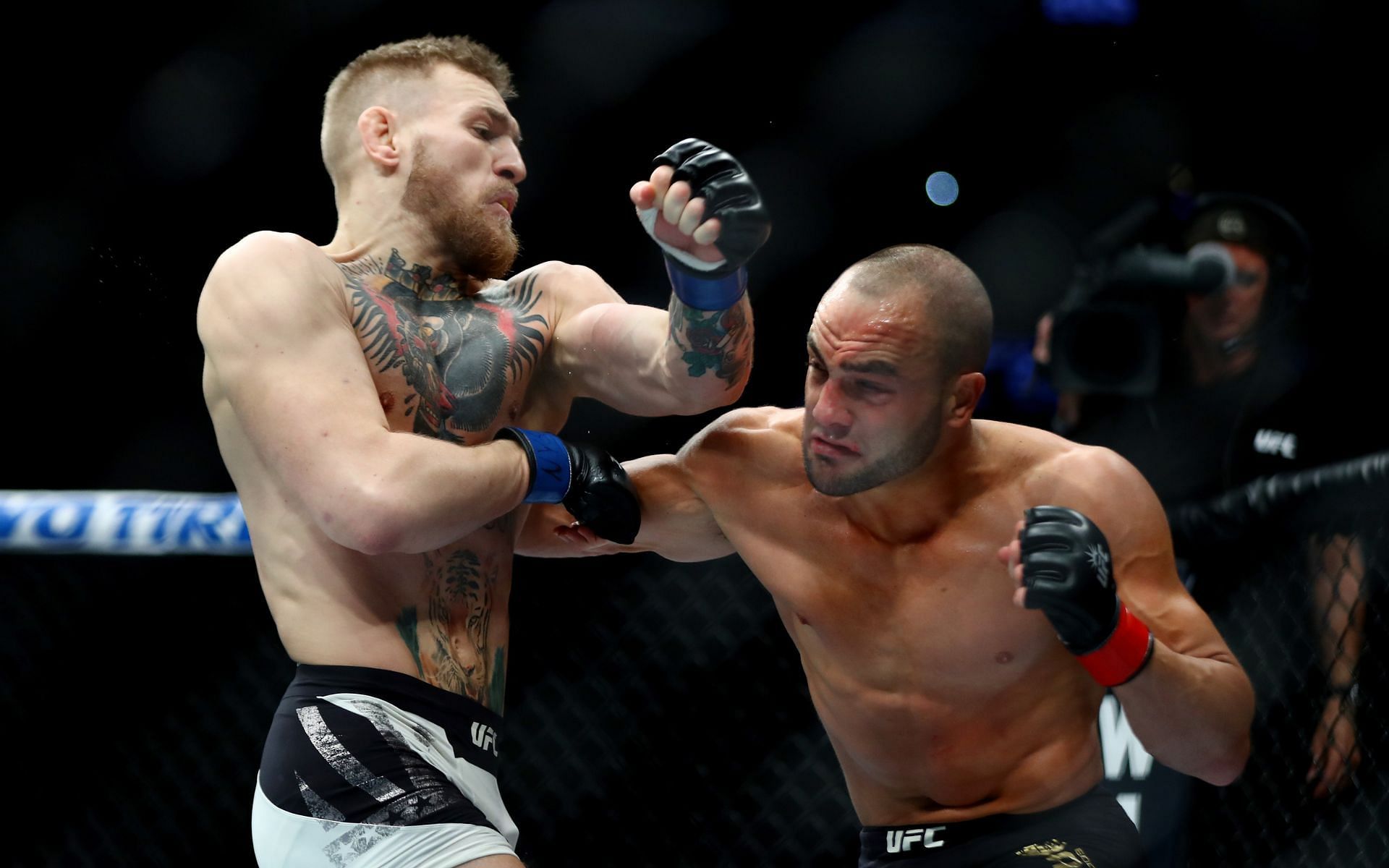
How Conor McGregor's "touch of death" left hand becomes a curse in fights: Breaking down analysis by legendary coach Firas Zahabi
MMA coach Firas Zahabi once deemed Conor McGregor's legendary power to be both a boon and a bane for him. Today, we revisit Zahabi's analysis of McGregor's power, cardio, and their correlation.
On episode 32 of the JRE MMA Show in June 2018, Joe Rogan hosted Zahabi. Rogan referenced McGregor while discussing fighters who start explosively but decline if their opponents survive the early onslaught.
The UFC commentator asked whether that was due to McGregor's poor conditioning or his being habituated to overwhelming opponents and being surprised when a foe doesn't wilt. Zahabi acknowledged McGregor's "fast-twitch, high-leverage left hand" and stated:
"I think it's partly genetic. Yes. Because, you see, I call it the touch of death. You know, he's got that left hand. It's the touch of death. That touch of death comes at a cost. Okay? How do you have the touch of death? Where does power come from?"
He added:
"So where your muscle is attached to your bone is gonna dictate how much leverage you get out of it. The second most important element is the type of muscle fiber you have, the type. So if you have a fast-twitch muscle fiber, you can hold less oxygen, but it can twitch faster, hence the name. So if you're a slow-twitch muscle fiber guy, you can metabolize more oxygen, but you can't twitch as fast. So there's a give and take."
Watch Joe Rogan and Firas Zahabi discuss the topic below (1:47:17):
Examining Firas Zahabi's take on Conor McGregor ahead of the Irishman's potential UFC comeback
Tristar Gym's Firas Zahabi suggested that Conor McGregor's striking, primarily his left-hand punch, is so energy-consuming that it depletes his overall cardio and gradually makes him vulnerable.
Firstly, Zahabi indicated that genetics -- one's overall physical make-up and the structure of one's bones and muscles -- affect power and cardio. Most experts usually agree that your genes greatly influence your punching/striking power.
To be fair, Conor McGregor has displayed tremendous cardio at the highest levels, including in his rematch against Nate Diaz. McGregor paced himself, went the distance, and won on the scorecards against Diaz who's counted among MMA's greatest cardio machines.
It's the Irishman's strategy of wanting to KO every opponent early that sometimes backfires and paints his cardio in a bad light.
As for the bone-muscle angle, it's tough to assess it merely via physical appearance. Furthermore, it's superior punching technique that's more important in creating better leverage and increased power.
Secondly, Zahabi and Rogan deemed Conor McGregor a fast-twitch muscle-fiber fighter, whilst implying that Nate Diaz and his older brother Nick Diaz are slow-twitch muscle-fiber fighters who have better cardio. Well, they're most definitely correct!
As Zahabi signaled, McGregor's thunderous KO power utilizes considerable energy. The supposedly slow-twitch muscle fiber fighters mostly lack the one-hitter quitter (there are exceptions!), but they could fight for longer periods.
Ironically, what makes Zahabi's assessment even more relevant today is that Conor McGregor has bulked up in recent years. Some fear it'll further diminish his cardio, while others feel it'll add to his already-terrifying one-punch KO power.
On paper, McGregor should possess more knockout power and less cardio. It'll be interesting to see how the former two-division UFC champion paces himself as he looks to end his three-plus-year MMA hiatus.